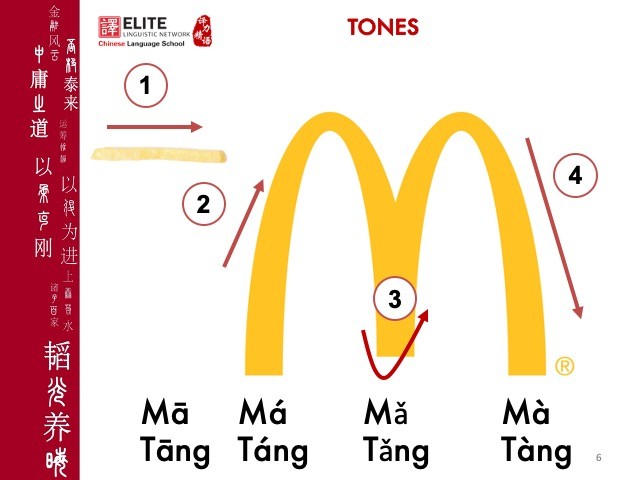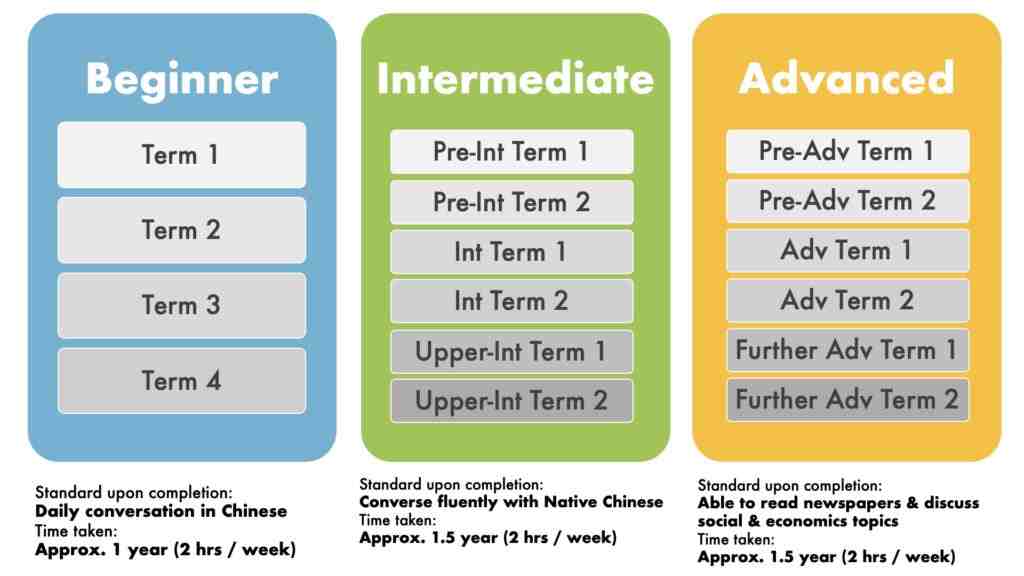I believe most of you who are interested to learn Chinese know that Chinese is a “Tonal Language” and different tones mean different things. Do you know how many tones are there in Chinese and what they are called?
There are “4 + 1” tones in Chinese. I will explain the addition 1 tone later. Let’s talk about the first 4 tones first. The first tone is called: “First tone”, second tone is called: “Second tone” (not joking :), so on and so forth. Because of the tones, it made Chinese sound really nice, but at the same time, it has also caused great difficulty in Chinese learners.
Today, I’m going to use a graphic representation & story to help you understand what are tones and how to remember them. Look at the picture below:
In our Chinese class, this is how we teach our students.
The First Tone
The First Tone is “high” & “flat” and it’s represented by a flat horizontal line. So how do you remember the sound? To do this, you can use our music lesson to help us. You sing: “Do-Re-Mi-Fa-So”… The first tone sounds exactly like “So”…. So everytime you forget how first tone sounds like, just sing “Do-Re-Mi-Fa-So”… will do.
The Second Tone
The Second Tone is “rising” and it’s represented by a diagonal line pointing up. The second tone is also called the “questioning tone”. How would you sound when you’re asking a questions? When you can’t hear clearly & you say: “what?” This is how the Second Tone will sound like. If you forget, just remember so say: “what?” will do.
The Third Tone
The Third Tone is “falling” then “rising” and it’s represented by a “tick”. It is the lowest pitch of all tones. When your friend asked you for dinner & you make the sound: “hmmmm, let me think about it”. The “hmmmm” sound is like the Third Tone. Another way to remember the Third Tone is to say “Really?”.
The Fourth Tone
The Fourth Tone is “falling” sharply and it’s represented by a diagonal line pointing down. This is what we call the “angry tone”. When your kid do something you disapprove of, you say: “No” or when you are angry and you say the F word in a forceful way, this is how the Fourth Tone sound like.
The Neutral Tone
Let me come back to this additional tone that I mentioned earlier. It’s called the Neutral Tone and there’s no tone marks on top of the finals. It’s supposed to be soft & short. For e.g. when you say Māma, the first syllabus is the FIrst Tone and the second syllabus is the Neutral Tone. So you should read the second syllabus softly as if it doesn’t matter.
I hope this sharing is helpful for you to understand the characteristics of the Chinese Tones. If you’re interested in learning Chinese in Singapore, you may sign up for our Chinese Free Trial Lesson at https://www.elitelinguistic.com/chinese-free-trial/ to experience our fun & engaging Chinese lessons.









